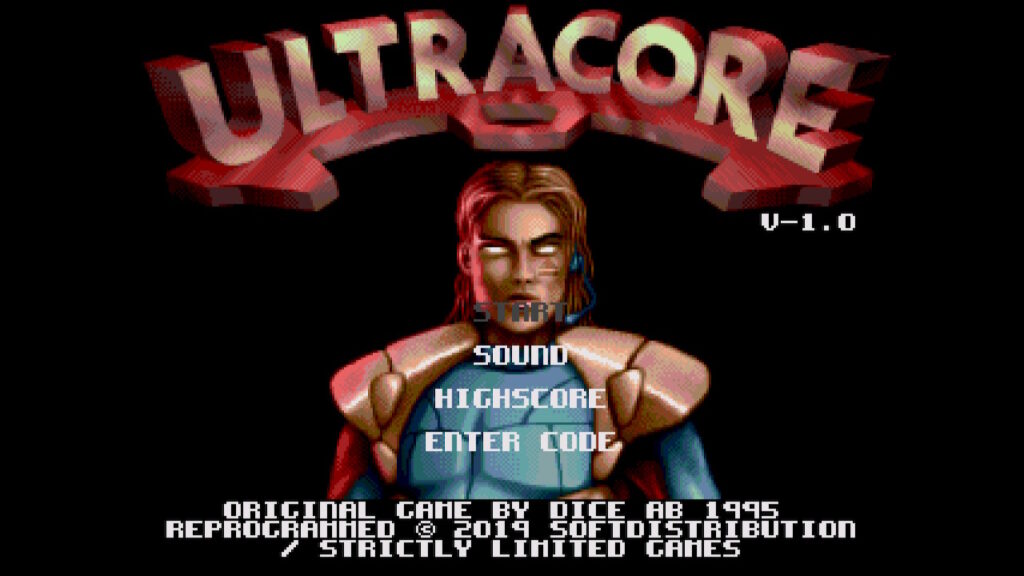
In 1994, DICE nearly completed a sci-fi run and gun action game for the Sega Genesis, Sega CD, and had an Amiga version in the works. At the time, Pysgnosis was to be publisher, but was in the middle of being taken over by Sony. Hardcore was a victim of circumstances, and had the poor timing of being developed very late in the fourth generation of consoles. For 25 years it was canceled, until April 2019.
The dawn of the fifth console generation was nigh, and the 16-bit consoles were in their twilight years. If developers weren’t beginning to start projects on new hardware, then they were hard at work converting what they already had to be compatible with the next generation game systems.
DICE happened to be working on a 2D action game that would not get released due to the shifting industry’s focus on 3D graphics. Hardcore as it was known; was so close to completion and was shelved until Strictly Limited Games saved it from being lost in limbo.
Rebranded as Ultracore, the new publisher would even make the effort of seeing this lost title to completion and making versions compatible with current generation platforms such as the Nintendo Switch and PlayStation 4. After all of this, is this relic from the 90s worth the wait?
Ultracore
Developer: DICE
Producer: Strictly Limited Games
Platforms: Nintendo Switch (reviewed), Playstation 4, Mega SG, SEGA Genesis/Megadrive (as Hardcore)
Release Date: April 28, 2019
Players: 1
Price: $32.94*
*Listed price reflects the original sku from Strictly Limited Games’ listing
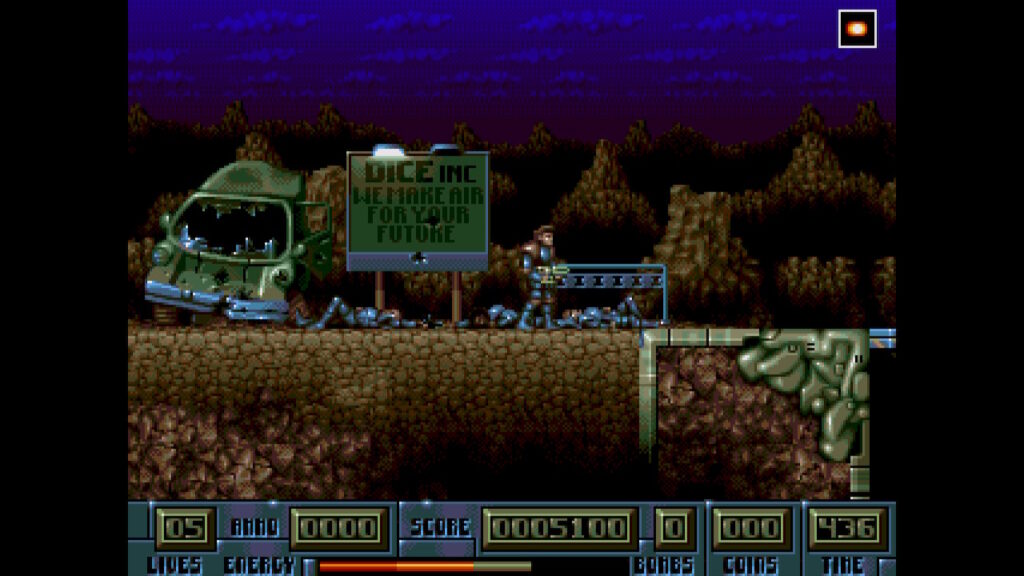
For a Genesis/Amiga game that was canceled, Ultracore looks amazing. It looks even better in motion with its parallax layers that move in the backgrounds and the chunky debris that scrambles in a flurry from destroyed robots. Some of these effects might have been added to this completed version; as they look much too taxing to ever run on a SEGA Genesis.
90s classics like Turrican and Rendering Ranger R2 were European developed games that were inspired by what the Japanese were putting in arcades at the time and Ultracore would have been a high watermark for this sub-genre.
Most of the English and German developers at the time had only 16-bit workstations which were just not capable of what arcades could do at the time. This meant that the artists had to work with extreme color limitations and had to be very economical and creative with every pixel. The result is the very recognizable aesthetic that is evident in Ultracore.
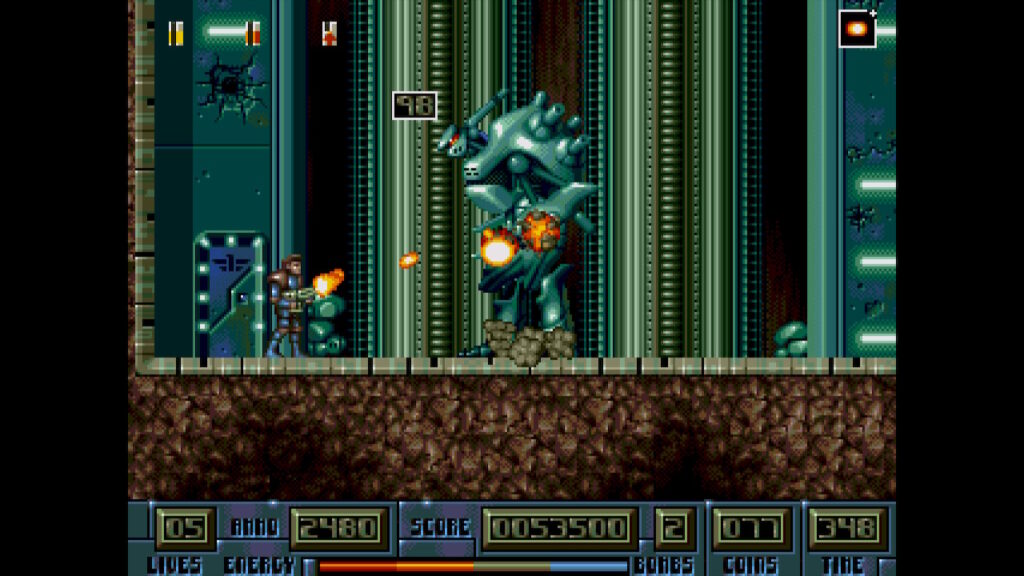
The visual style of Ultracore looks like what you’d get if you combined Heavy Metal Magazine with a 1980s sci-fi manga. The mechanical designs are best described as a cyber-nightmare; highly industrial and full of moving parts to get caught on. Every area is teeming with dozens of droids, moving turrets and bi-pedal machines that are eager to charge the hapless protagonist.
Sometimes it seems almost like the enemy placement is haphazard. Entire platoons of cyborgs will be stacked into a very small secret room as if it is a joke on the player. Entire swarms of mechanical insectoid drones will get the jump on you if you plow ahead too quickly.
Dirty traps and unfair tricks happen a bit too much. Some of the platforming requires pixel-perfect precision jumping, and not clearing the leap will almost always result in losing a life to a kill-surface or bottomless pit.
Other times the traps have actual bait used to lure unsuspecting players to another cheap death with no telegraphing at all. This a game from the days when trial and error was a more accepted form of artificially padding out the title’s length.
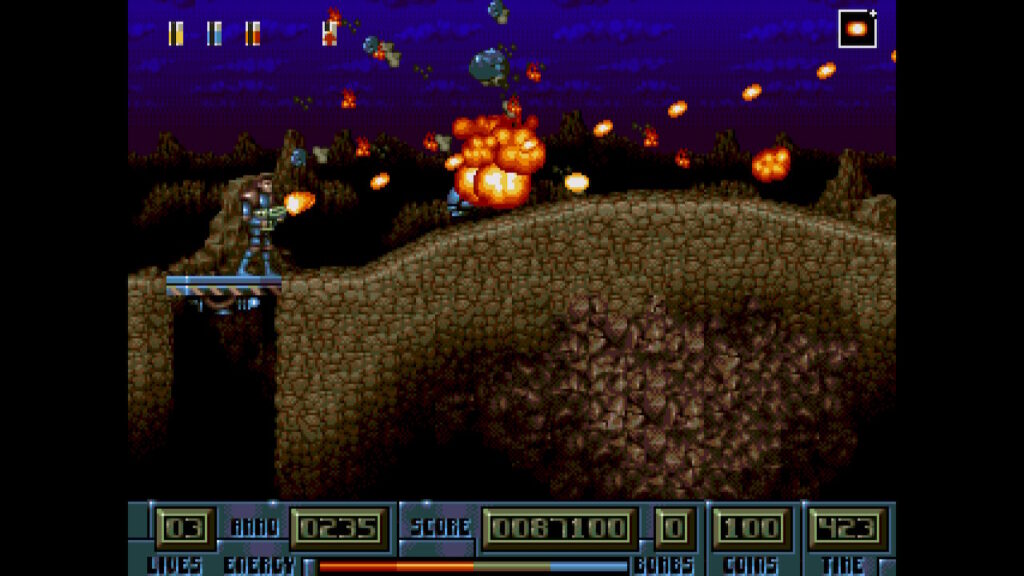
When not pulling out your hair in frustration, expect to do a lot of shooting. In fact it is recommended to never stop shooting ever, because of how many threats can be on screen at any moment. A very common situation is the screen being completely flooded with robots and bullets to dodge, that the game becomes a bullet-hell action game.
One feature that has been added to Ultracore‘s mechanics as a 2019 release is making the experience a twin-stick shooter. The right stick can be used to fire in about eight directions, with an extra jump button mapped to L1. This is very helpful since the odds are completely stacked against you, and there are limited lives and continues. You are able to beat Ultracore with only the face buttons, like how climbing Everest without gear is technically possible.
Not using the right stick for easy shooting means having to awkwardly aim while firing with a face button. This is trickier than it seems, and usually results in slightly less control while moving and shooting. You have to stop firing for a split second while not moving- then being firing while stationary in order to toggle the ability to strafe backwards while firing. It almost feels more like a fighting game special attack input.
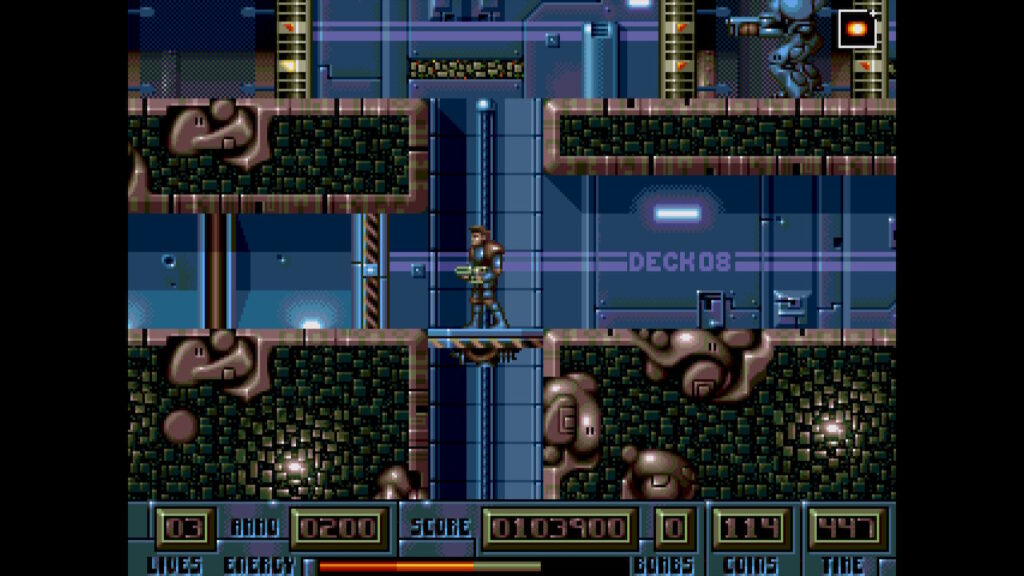
There is no shortage of firepower to deal with enemies- between the basic weapon upgrades, rocket launchers, and various laser weapons. If it weren’t for the unreasonable platforming challenges and traps, Ultracore would have been a pretty easy game.
Bosses have easy to follow patterns and don’t take more than 10 minutes to dispatch. The player-character has a decently sized health bar that can take several hits and the levels hide just enough health packs to get by.
Some archaic hold-overs from the 90s like the arbitrary timer that kills you when it runs out still remain. Ultracore is actually generous with how much time is gives and more is easily acquired as a pick-up. However, having this creates too much pressure to do any exploration at all which is a shame because the stages can be big.
Each level is structured with several locked doors that require keys, and terminals to enable bridges or platforms. Exploring these areas can be overwhelming at first. This is due to the sensory overload of the horde of enemies rushing you, and that every area is full of desirable hidden bonus pick-ups that only can be acquired by going off the main path.
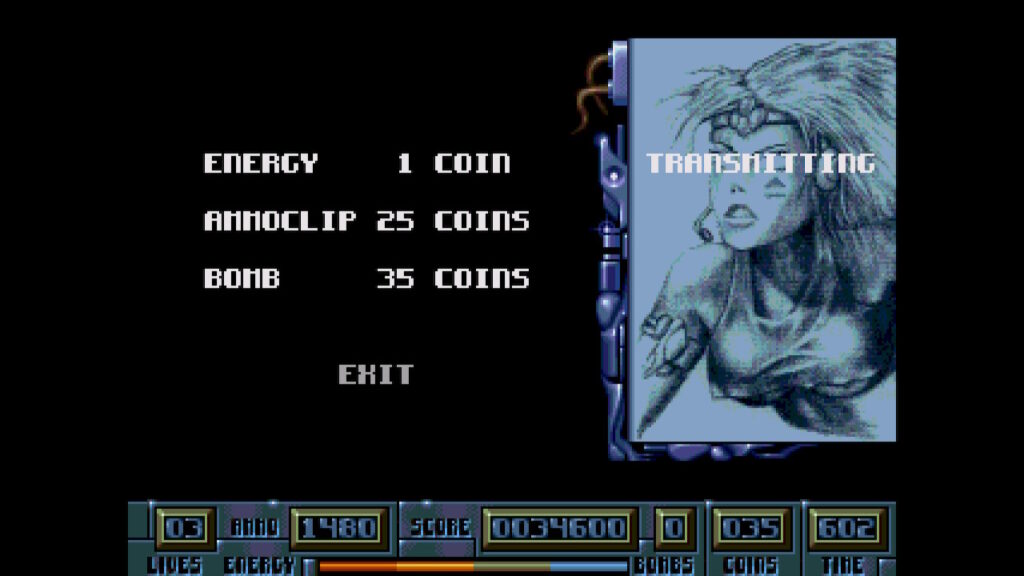
This does add replay value, but it never feels right to be constantly rushed by an arbitrarily implemented countdown to death. The pointless lives and continues don’t add to the challenge, since they only limit how many times you can attempt to try to overcome some of the unfair obstacles placed by a sadistic developer.
It is very likely that most gamers will burn through most of their lives in a single of gauntlet of crushing walls, only to use their last life in an unrelated trap later on. Ultracore does not have any progress saving at all, and requires players to make a record of the level code upon stage completion.
The fact that somebody took the time to implement modern twin-stick shooting mechanics in this, and did not bother to add a level select for completed areas is baffling. By not having stage select, Ultracore frustratingly has an extra step of having to enter a level code at the start screen. There was a reason why this practice ended a long time ago.
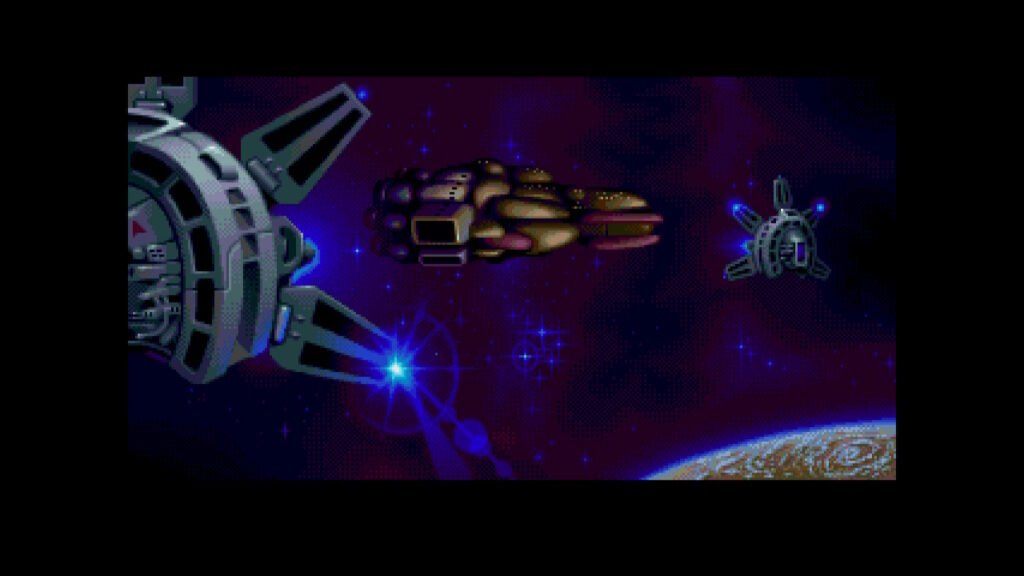
Why anyone would play Ultracore is for its intense action, not for its anemic story. Aside from a few screens of flavor text between stages or a few dialogue with a few nameless soldiers, there is not much one can gleam.
In the physical instruction manual there is mention of a guy named Vance, who uses a robot army to take over space. This is all the reason the unnamed player-character needs to pick up a gun and shoot anything that moves. He is some kind of soldier and likely knows as much about anything as any player who picks up the controller.
In a way, the completely uninvolved and disconnectedness of the hero works, since he is just a lowly grunt. There is so little lore involving either factions, that the morality between the two really could go either way, and players could be potentially be the bad guys. The flavor text and manual info could potentially be Starship Troopers style propaganda for all we know.
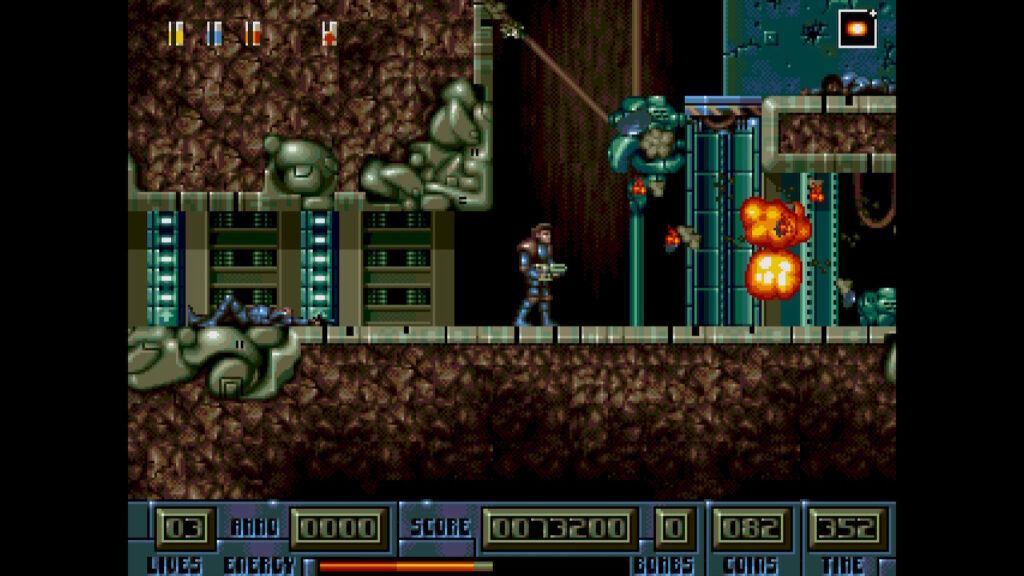
Ultracore’s sound and music has that distinctive metallic SEGA Genesis texture. The score is a selection of pulse pounding, heroic Euro-techno beats.
Having such exhilarating music for a game like this is key to keeping the player on edge so their reflexes never dull. The developers were so confident in the music, they even put a track list in the manual for players to refer to.
The sound design from games like this had unique quality to it. Explosions had a warmth synth bass that didn’t even really sound like an explosion, but it somehow made sense. It adds to the cyberpunk aesthetic of the atmosphere, making it feel more authentic.
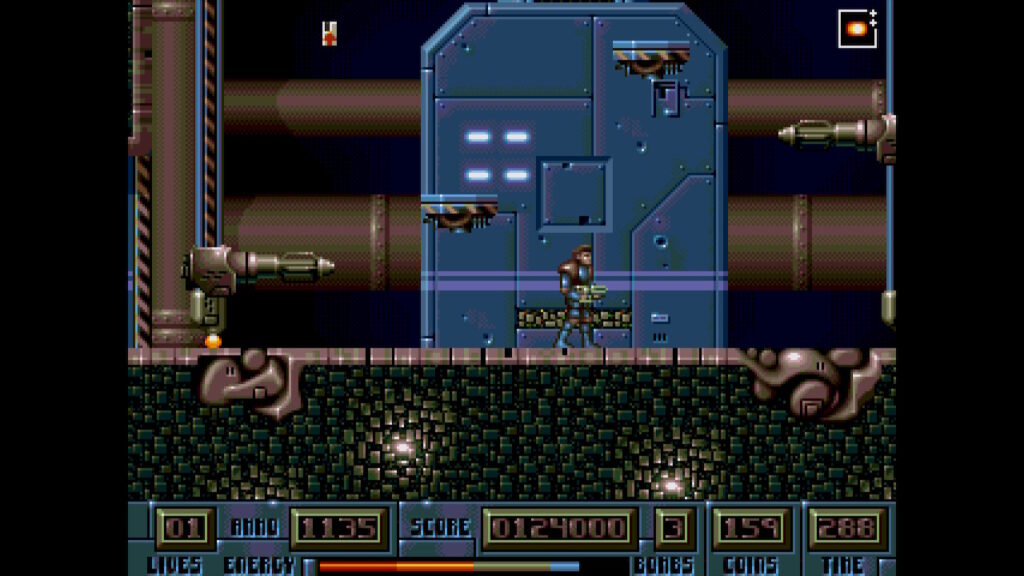
As of publishing this review, Ultracore has not yet been put up on the Nintendo eshop or Sony’s PlayStation Network. For some reason the only way to play this on current platforms was to buy the physical copy from Strictly Limited Games.
Ultracore is a very solid 2D action game, if a bit unfair at times. Retro game enthusiasts would adore the deftly crafted pixel art ,and classic run and gun gameplay. This is not for the faint of heart- some challenges may seem impossible, but they can be completed.
Hardcore may have been a more appropriate title. For legal reasons Ultracore could not be called that, despite it truly living up to that moniker. With an honest handle like that, it is safe to say that it was worth the wait.
Ultracore was reviewed on Nintendo Switch using a personal copy obtained by the reviewer. You can find additional information about Niche Gamer’s review/ethics policy here.